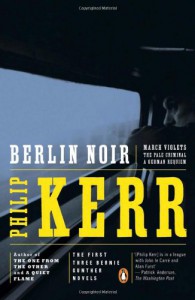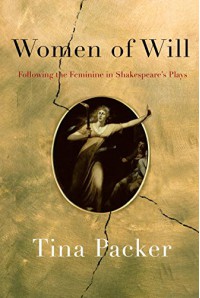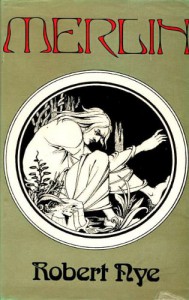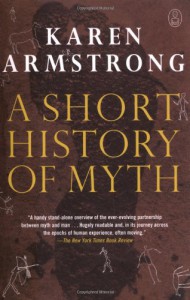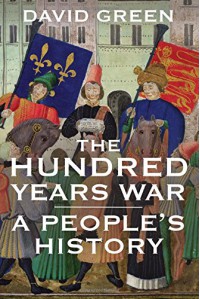
Living With Shakespeare is a collection of essays by various folk, ranging from academics and authors to actors and directors, and even a scientist, about their relationship with WS. As you would expect, some were very interesting; others, not. Most fell between those two extremes. What follows is not a review per se but rather a collection of thoughts and impressions I jotted down as I finished reading each piece. It’s fascinating what people discover when they tangle with the Bard.
“Foreword,” Harold Bloom – Lord, I loathe Bloom! And sentences like this only confirm my dislike: “At their strongest, as in Iago, Shakespeare’s grand negations are figures in a negative poetics which is a kind of dramatic negative theology” (p. x). Fortunately, only a couple of the essays that follow read like this so don’t be daunted.
“A Little Monkey Business,” Bill Willingham – Rather tiresome essay about the over-flogged horse that the reader/audience is a collaborator with the author. Not badly written, but it doesn’t offer much in the way of interest or insight. [I have read several of Willingham’s Fables volumes and enjoyed them.]
“Speaking Shakespeare,” Sir Antony Sher – My note here says “Most interesting and insightful so far,” which seems a bit silly now considering it’s only the second essay in the volume. However, as it turned out, it did remain one of the more interesting and insightful entries. I’m finding that the best critiques of WS are coming from people who actually work with the texts – actors, authors, directors, etc. – as opposed to the strictly academic writers. In that spirit, I would recommend the following: Shakespeare, Mark van Doren; Women of Will, Tina Packer; Reading Shakespeare's Sonnets, Don Paterson.
“Teaching Shakespeare to Actors,” Camille Paglia – She’s still alive? I didn’t like her back in the ‘80s when she was often in the news and I still don’t. If I’m reading this essay correctly, she’s saying that American troupes staging Shakespeare should stick to traditional forms because American audiences have a hard enough time understanding that much less anything remotely experimental. Aaaagh! Fortunately, based on subsequent essays, no one appears to be listening to her.
“The Architecture of Ideas,” Sir Ben Kingsley – A perhaps overheated plea to respect language, its rhythms and beauty, and not be seduced by technology or the idea that language doesn’t matter. This essay put me in mind of two versions of Macbeth I watched recently: The 2015 film by Justin Kurzel with Michael Fassbender, and the 2010 film by Rupert Goold with Patrick Stewart. I like both actors but Fassbender’s Macbeth just didn’t work for me. There didn’t seem to be an understanding of what Kingsley was getting at in this essay, and so much of the language was cut that only someone already familiar with the play would have been able to follow what was happening much of the time [beautifully shot, however]. I loved Stewart’s version so much I had to buy the DVD. Holy crap, that man can act! The opening scene alone is amazing enough but the rest of the DVD lives up to it. [I also liked the 1971 Polanski effort with Jon Finch.]
“King Lear in Retrospect,” Cicely Berry – Berry is the director of voice at the Royal Shakespeare Company. I had hoped to read more about how she works with actors to bring out the power of WS’s language. There’s a lot about where and whom she’s taught, but not a lot of specifics about the what.
“Method and Madness,” Tobias Menzies – Occasionally I googled the authors, esp. the actors, because I wanted to know if I’d seen them in any context. I watch a lot of British TV but have a problem hooking names up with faces. It turns out that Menzies was the son of the Nazi-sympathizing innkeepers in “The White Feather,” an early episode from Foyle’s War. I have two notes from this essay, one concerns Menzies’ point that there’s no single or “correct” way to portray a WS character, and the other concerns the theme of using “madness” as an avenue to discovering who you are and why you’re here (in this essay he focuses on “Lear” and “Hamlet”).
“Character and Conundrum,” Rory Kinnear – Kinnear writes about how one approaches creating a character. With WS, there’s often little to go on, and an actor has to make decisions about how and why a character does what he or she does. He discussed how he approached two roles: Angelo in “Measure for Measure” and “Bolingbroke” in “Richard II.” He played the former as someone who believes in what he preaches but then finds himself in over his head when the Duke puts him in charge. He played Bolingbroke (the future Henry IV) as a man who truly did not want the crown but found himself becoming seduced by its power (to his dismay). [I didn’t have to google this one.]
“I Know a Hawk from a Handsaw Regardless of the Weather, But That’s Pretty Much It,” Matt Sturges – Don’t have much on this one. Just a quote from p. 102: “[A]s with so many things, with Shakespeare you get out exactly what you put in.”
The next three essays comprise the “Othello Trilogy”:
“The Sun God,” James Earl Jones – Jones focuses on the crucial temptation scene when Othello’s fatal flaw overwhelms his nobility and the inevitable tragedy follows. I found it interesting that Jones denies that Othello succumbs to jealousy. Instead his rage stems from the cognitive dissonance of his image of Desdemona and the one Iago conjures. He also observes that (in his interpretation) Iago too is broken, becoming a man with nothing to lose. Othello is not a victim since he freely chooses to believe the worst (otherwise there’s no tragedy). He appends some notes he made about how he would stage the scene that sounds like it would be amazing if produced.
“Othello in Love,” Eamonn Walker – I own the DVD of Walker’s and Tim McInnerny’s performance of “Othello” at the Globe. Walker’s Othello was fine but the stand out was McInnerny as Iago. It’s a revelation for me since I’ve only seen him in the Black Adder series, Black Death and Severance, among a few other things. But back to the essay: This is an example of how a different actor takes a wholly different approach to the character, though a no-less-legitimate one. [My notes here comment on Iago: In Jones’ interpretation, Iago is Othello’s darker alter ego – the man who does the dirty work and allows Othello to remain noble and pure; in Walker’s, Iago’s motivations are thwarted love and repressed sexual feelings toward the Moor.]
“Othello: A Play in Black and White,” Barry John – This was the most interesting of the “Othello” essays. John recounts how he participated in an adaptation of “Othello” that centered around an acting troupe putting on the play, and how the story of their production mirrored that of the play. It sounds like a fascinating experiment and I wish I could have seen it.
“Re-Revising Shakespeare,” Jess Winfield – Winfield is one of the founders of the Reduced Shakespeare Company, a comedy group specializing in abridged versions of the plays. The point Winfield makes here is that WS is not the Word of God. He’s meant to be chopped up, edited and revised (just like Will himself was constantly doing and just like any playwright/acting company does). He’s a welcome antidote to the deification of WS Bloom seems determined to effect. [I read Winfield’s My Name Is Will: A Novel of Sex, Drugs and Shakespeare in 2009 and gave it four stars so I suppose I’m recommending it.]
“I Say It Is the Moon,” Brian Cox – I first saw Cox in Rob Roy as the malicious factor or as the intelligence officer in the first few episodes of the Sharpe series. Either way, I instantly loved his performance and always enjoy watching him (even in crap like Troy). Here, he writes about Shakespeare’s plays as allegories of things breaking down and the restoration of order. This is also the first essay that raises the idea that WS is constantly searching, interrogating and exploring but never arriving at an answer or a final destination.
“The Question of Coriolanus,” Ralph Fiennes – This essay carries on from Cox’s thoughts about order vs. chaos. Both essays tend to slight Volumnia, Coriolanus’ mother. For an extended discussion about her, I strongly recommend the chapter in Tina Packer’s Women of Will.
“Trial by Theatre, or Free-Thinking in Julius Caesar,” Richard Scholar – Traditional academic essay (though not as awful as the Foreword or an upcoming chapter); readable but not terribly interesting. I don’t think WS deliberately set up a conflict between “free-thinking” and “authoritarian control” (Brutus vs. Caesar), though it reflects the theme of the last few pieces – that WS is adept at asking questions but refuses to answer them (or provides several possible answers). Scholar did afford me the opportunity to imagine an experiment I would have liked to try with my English classes when I was teaching (lo, many years ago now). Rather than write a paper that they’d probably crib from the Internet anyway, I’d have my students pretend to be an actor in whatever play we were studying and chronicle how they approached their the role and how they would act the part (modeled on Jones’ example in his essay and other instances from later in this volume).
“Saying in The Merchant of Venice,” Stanley Cavell – A reflection on Shylock’s acceptance of the verdict: Sudden & final. A realization that his fury is against all Christians (p. 257). Shylock loses the power of speech (figuratively) because he realizes that he will no longer be allowed to speak. He’s not recognized as “human” and neither entitled nor capable of it.
“Searching for Shylock,” F. Murray Abraham – Starts off as his thoughts on Shylock and what motivates him and it promised to be interesting but then it devolved into an essay on how the physical space in theaters affects how the actors work, and an extended paean to the theaters and actors he worked with while playing Shylock.
“Boldness Be My Friend,” Jessie Austrian, Noah Brody & Ben Steinfeld – How to present the “problem play” “Cymbeline.” First off, toss out the idea that there’s a “problem” to solve. Goes into a discussion of how they approached the play and tried to bring it to life. A concrete example of actors taking WS’s play and making it a collaboration.
“Killing Shakespeare and Making My Play,” Karin Coonrod – A description of how Coonrod interpreted “Love’s Labor’s Lost” [sic] and how she brought it to life on the stage.
“Playing Shakespeare at The Globe,” Dominic Dromgoole – Started off with what threatened to be a curmudgeonly jeremiad against modernizing WS (and it still tread closely to that) but veered off into a discussion about the power of language (e.g., Henry V’s speech to Harfleur’s governor does what all his siege engines and troops could not – gives him the city).
“Tolstoy and the Shakespearean Gesture,” Angus Fletcher – Outside of Bloom’s foreword, this is the most hideous of the academic essays in this volume. I knew I was in for a long read when I ran smack into this sentence in the first paragraph: “In this curious art form, action on a stage implied a psychological austerity of probable causes, supported by a suggestive, if never quite determining, rhetorical style of utterance” (p. 316). When all was read and done, I think he’s arguing that WS’s genius lies in his ability to create real people through everyday speech and action as opposed to the declamatory style of contemporary playwrights like Kyd and Marlowe.
“The Red Scarf,” J.D. McClatchy – A quote & a thought: “But it seems odd that Shakespeare, the language’s premier poet, should have had almost no direct influence on his poetic progeny” (pp. 333-4). Not enough of an English lit student to judge the worth of this insight.
“Spring Imagery in Warwickshire,” Germaine Greer – Speculation on WS’s relationship with his family and hometown. She argues that he spent considerable time in Stratford, most often in spring. Interesting enough if you’re writing a novel or a class paper and wanted to establish WS in his milieux. I don’t know how valuable this insight is really.
“What’s in a Name? Or Unnamed in the Forest,” James Prosek – Here’s my note: “WS wrote about the power of language, esp. names. Many characters assume different names and thus become different people (esp. the women), or they can’t change their names and duly suffer (“Romeo & Juliet”).” I was reminded here of Isabella in “Measure for Measure,” who is speechless by the end of the play, when she is apparently expropriated by the returned Duke, who has regained his name and the power of speech.
“The Sea Change,” David Farr – Another instance where I left myself an ambiguous note. This was a very short essay and didn’t hold my interest.
“Looking for Illyria,” Alan Gordon – First part is Gordon’s fascination with the Fool archetype and how he parleyed that into a series of novels using Feste and Viola as protagonists. The second part laments the fact that most Shakespeare productions where fools factor in do not cast real fools and tend to miss out on all the depth such casting could give the characters. [Despite the mixed reviews I’ve seen on GR, I was intrigued by the premise of Gordon’s novels and may decide to put them on my wish list.]
“Shakespeare’s Siblings,” Eleanor Brown – The theme of the last few essays is authors incorporating WS into their own works. Here, Brown discusses how family relationships in WS influenced her novels.
“A Star Danced,” Eve Best – Reflections on her portrayals of Lady Macbeth and Beatrice. Both are looking to repair their relationships with the men they love. Lady Macbeth errs fatally in her attempt to bridge the gap; Beatrice is more fortunate.
“Two Loves, or the Eternal Triangle,” Dame Harriet Walter – Many of WS’s plays revolve around a woman competing with a man for the love of the hero (see Sonnets as well): “Much Ado About Nothing” – Benedick-Beatrice-Claudio (et al.); “Merchant of Venice” – Antonio-Bassanio-Portia; “Hamlet” – Hamlet-Ophelia-Gertrude; “Troilus & Cressida” – Troilus-Cressida-Diomedes. She also brings up WS’s misogyny. She ends sounding forlorn: “I need to believe that he includes women in his embrace of humanity. But the truth is that I have to lay aside my aching curiosity and accept that I can never know the man whose words I love to speak and hear” (p. 406).
“Odd Man Out,” Jane Smiley – I couldn’t finish A Thousand Acres, Smiley’s version of “King Lear,” though I’ve liked Smiley’s nonfiction essays and reviews, including this one, which explores what Smiley sees as a maturation of WS’s thoughts about love and loss, from the apocalyptic ending of “Lear” to “The Winter’s Tale,” where “the end of the world is not the end of the world” (p. 411).
“The Living Drama,” Dame Margaret Drabble – Not sure what to make of this one. The last sentence suggests that the stage (less so film) offers the greatest opportunity to present WS in a variety of interpretations.
“The Tragedy of Imagination in Antony and Cleopatra,” Joyce Carol Oates – The conversion of “brute reality” into “lyric illusion” is the ultimate goal of WS in this play and in all of his work. Reality wins out in other plays but here the illusion triumphs.
“War and Love,” Maxine Hong Kingston – “Romeo & Juliet” as a horror story about love destroyed by a senseless war.
“On the Terrible and Unexpected Fate of the Star-Crossed Lovers,” Peter David – A whimsical piece describing the reactions of a mostly teen-age audience to the ending of Luhrmann’s “William Shakespeare’s Romeo + Juliet.”
“Shakespeare and Four-Colour Magic,” Conor McCreery – This was one of my favorite essays. McCreery makes two points: If you can’t see WS, the next best thing is to read him in a comics format, which also can convey the dynamism that staging does in a theater or on film. Secondly, WS is a master at shifting tones in the plays, moving from comedy to tragedy and back. This is increasingly uncommon in today’s authors and directors pressed to keep narratives linear and clear to attract the broadest audience.
“Rough Magic,” Julie Taymor – Discusses her production of “The Tempest” with Helen Mirren as Prospera and the subtle changes a change in gender entailed: (1) Changed the focus from father-centered concerns about a daughter to mother-centered; (2) the disavowal of magic means a return to the restricted life of a woman in Milanese society (symbolized by Mirren reassuming the restrictive corset of courtly dress); and (3), unlike Prospero, who regains his freedom along with everyone else at the end, Prospera sacrifices hers.
“My Own Private River,” James Franco – Description of Franco’s recutting of Gus van Sant’s “My Own Private Idaho,” focusing on River Phoenix’s character of Mike Waters, a stand-in for Poins. “Shakespeare creates such a vivid, rich, and complex world that we can fruitfully focus on just one part of it and find inspiration for a whole variety of artistic endeavors” (p. 488).
“Enamoured with Shakespeare,” Isabel Allende – “Language was his only tool” (p. 491). If there’s one thing I’ve learned reading these essays it’s that WS – as far as his plays were concerned – expected his actors and audience to use a wealth of extralinguistic tools to drive the story. Otherwise, the usual stuff about WS’s genius and universality. This essay reminded me of Ted Reynold’s short story “Can These Bones Live,” which explored the possibility that there is something that transcends the aspirations and concerns of humans and is truly universal [highly recommended if you can find a copy].
If you’re still with me, I would recommend this book. Not every author is going to talk about something you’re interested in but if you have any interest in theater/film and Shakespeare, there’ll be something here that will catch your eye.
 4
4
 5
5







